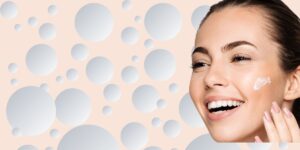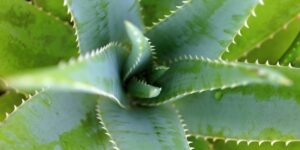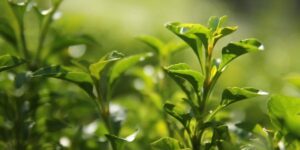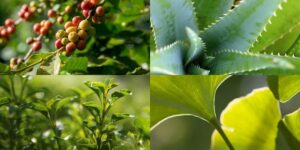Introduction
Human skin is a multi-layered organ with a hard, thin outer layer called the startum corneum(SC). The SC is an inert structure not unlike a brick wall made up of nonviable (dead) cells. It is the function of the SC to maintain skin moisture levels by preventing water from escaping out and to protect the skin by preventing entry of harmful environmental factors from coming in. The SC is made up primarily of proteins and lipids (oils) and is impermeable to water and water soluble substances, much like a raincoat.
In order to maintain its flexibility, integrity, and critical catabolic activity the SC must remain hydrated, and in healthy skin the tissue contains greater than 10% water1. In the absence of water in the SC, skin becomes cracked, dry and brittle so it is important to maintain a water balance in the SC. The SC maintains optimum hydration levels through reducing water natural loss (called Transepidermal Water Loss (TEWL) through the skin due to environmental factors (heat, wind, sun etc.). Water in the SC is “bound” by a system called the Natural Moisturising Factor (NMF)1, a complex mixture of water-soluble compounds that serve to “bind” water in the SC. These compounds collectively prevent water from escaping the skin due to the desicating effects of the environment.
The NMF consists of a complex collection of chemical compounds such as glycerin, hyaluronic acid, lactic acid, amino acids and various minerals1. The amount of NMF in the SC determines how much water the skin can hold for a given external relative humidity. The water-retaining capacity of the NMF is critical for maintaining the physical properties of the SC and preventing skin drying.
“The importance of the NMF lies in the fact that the constituent chemicals, particularly the PCA and lactic acid salts, are intensely hygroscopic.”1
Components of the NMF
“The NMF constitutes about 20% to 30% dry weight of the stratum corneum.”2
Humectants are a group of compounds that attract and attach water and are important components of skin hydrating systems3. Most components of the NMF have humectant properties. Some notable and important NMF components include:
- Glycerin is a humectant and an important component of the NMF. When topically applied, glycerin can restore SC moisture levels by drawing water into the SC.
- Lactic acid is component of the NMF and serves to bind water as well as help regulate skin pH. Lactic acid also plays a role in natural skin exfoliation.
- Panthenol is a natural hydrating compound commonly used in many cosmetic formulations.
- Sodium PCA is an organic compound that is one of the more important constituents of the NMF.
Factors Affecting Skin Hydration
“The water held by the hygroscopic substances in the stratum corneum (SC) is a controlling factor in maintaining skin flexibility and desquamation.”3
Maintaining moisture balance in the SC involves a complex interaction between water desiccating environmental factors and the chemical structures of the SC. Factors that affect this balance and therefore skin hydration levels include2:
- Maintaining the humectant balance of the NMF so that water is bound to the SC
- Maintaining the lipid (oil) balance of the SC which support a “water-proof” structure to prevent water escape
- Maintaining the exfoliation or desquamation process of the SC to prevent dry, flaky skin
- Relative humidity of the external environment
- Use of cleansing surfactants which deplete the lipid layer of the SC
- Use of emollient and/or occlusive agent which form a water retaining barrier on the skin4
- Increase intake of dietary of water to enhance skin hydration
“Emollients and moisturizing creams are used to break the dry skin cycle and to maintain the smoothness of the skin.”4
Discussion
Maintenance of the moisture balance in the SC is critical to maintaining a healthy skin. Humectant water binding by components of NMF and emollient action to retain water loss are both important factors. Using multifunctional products that support both functions can improve skin hydration. Our Green Micelle™ formulation system uses a micellar-based formula to combine natural emollient oils with natural water-soluble skin humectants to provide a more balanced treatment for dry skin conditions.
References
- 1.Harding C, Rawlings A. Effects of Natural Moisturizing Factor and Lactic Acid Isomers on Skin Function. In: Dry Skin and Moisturizers: Chemistry and Function. Dermatology: Clinical & Basic Science. Taylor & Francis, CRC Press; 2005:187-209.
- 2.Kilpatrick-Liverman L, Mattai J, Tinsley R, Wu J. Mechanisms of Skin Hydration. In: Handbook of Cosmetic Science and Technology. 3rd ed. Informa Healthcare; 2009:2291-106.
- 3.Loden M. Hydrating Substances. In: Handbook of Cosmetic Science and Technology. 3rd ed. Informa Healthcare; 2009:107-120.
- 4.Lodén M. Role of topical emollients and moisturizers in the treatment of dry skin barrier disorders. Am J Clin Dermatol. 2003;4(11):771-788. doi:10.2165/00128071-200304110-00005












